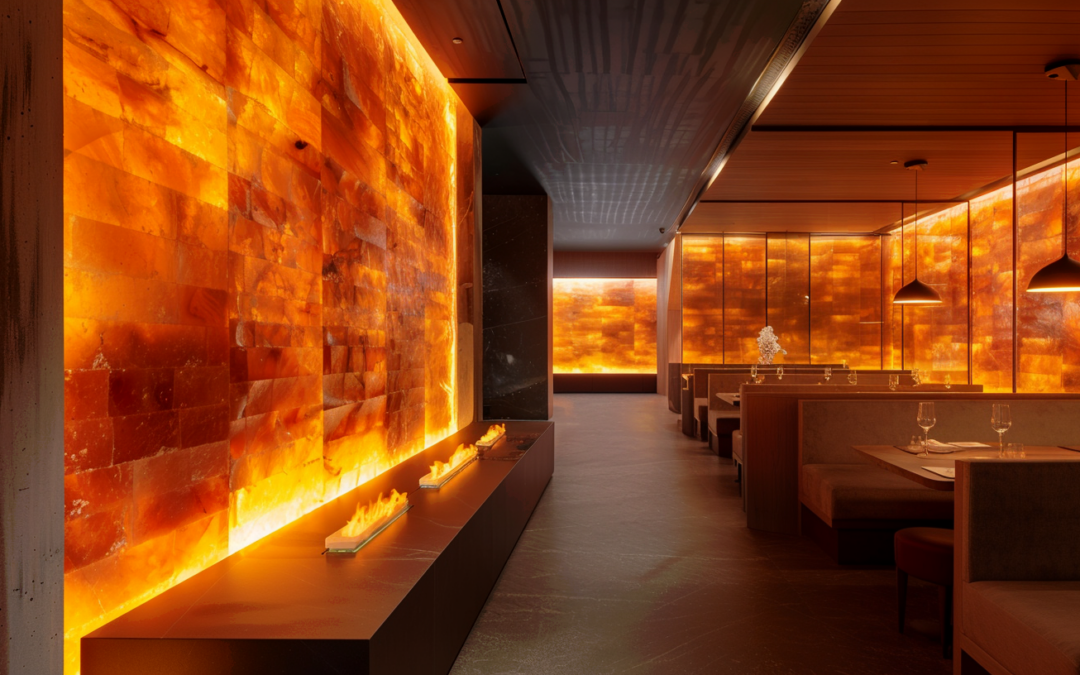In the world of interior design, creating a memorable and luxurious hotel experience is key.
From the lobby to the guest rooms, every element plays a crucial role in shaping the overall ambiance.
One unique and increasingly popular element that designers are incorporating into their projects is Himalayan salt. Known for its natural beauty and health benefits, Himalayan salt is being used in a variety of creative ways to enhance hotel interiors.
In this article, we’ll explore the latest trends, offer tips for incorporating Himalayan salt into hotel design, and showcase some inspiring case studies and projects.
Trends in Hotel Interior Design Using Himalayan Salt
Salt Walls and Panels: One of the most popular trends is the use of Himalayan salt walls or panels. These features not only add a visually striking element to the space but also emit negative ions, which are believed to have various health benefits, including improved air quality and mood enhancement.
Salt Lamps and Lighting Fixtures: Himalayan salt lamps and lighting fixtures are another trend that adds a warm, inviting glow to hotel spaces. These fixtures can be used in lobbies, hallways, and guest rooms to create a calming ambiance.
Salt Spa Features: Many hotels are incorporating Himalayan salt into their spa designs. From salt saunas to salt caves, these features are not only aesthetically pleasing but also offer health benefits, such as improved respiratory health and relaxation.
Salt Decor and Accessories: Himalayan salt decor and accessories, such as salt sculptures, bowls, and candle holders, are also popular choices for adding a touch of elegance to hotel interiors. These items can be used in various spaces, from reception areas to guest rooms.
Tips for Incorporating Himalayan Salt into Hotel Design
Balance and Harmony: When incorporating Himalayan salt into your design, it’s important to achieve a balance and harmony with other elements in the space. Avoid overusing salt features and ensure they complement the overall design concept.
Layering and Texture: Himalayan salt works well when layered with other textures and materials. Consider combining it with wood, metal, or glass to create a visually appealing and cohesive look.
Lighting Considerations: Since Himalayan salt has a unique translucent quality, lighting plays a crucial role in highlighting its beauty. Use warm, ambient lighting to enhance the natural color and texture of the salt.
Maintenance and Care: Himalayan salt features require regular maintenance to preserve their beauty and functionality. Be sure to follow care instructions provided by manufacturers to ensure longevity.
Case Studies and Projects Incorporating Himalayan Salt
The Salt Room at the Sheraton Grand Mirage Resort, Gold Coast: This luxurious salt room features walls made entirely of Himalayan salt bricks, creating a tranquil oasis for guests to relax and rejuvenate.
The Salt Therapy Rooms at the Ritz-Carlton, Amelia Island: These salt therapy rooms offer guests a unique wellness experience, with walls and floors made of Himalayan salt and relaxing ambient lighting.
The Spa at the St. Regis Bal Harbour Resort: This spa features a stunning salt sauna made of Himalayan salt bricks, providing guests with a serene and detoxifying experience.
In conclusion, incorporating Himalayan salt into hotel interior design is a trend that offers both aesthetic appeal and health benefits. By following the tips mentioned above and drawing inspiration from successful projects, designers can create memorable and inviting hotel spaces that cater to the well-being of guests.
We hope you found the information above useful. Leave a comment below, or contact us if you have any questions.
